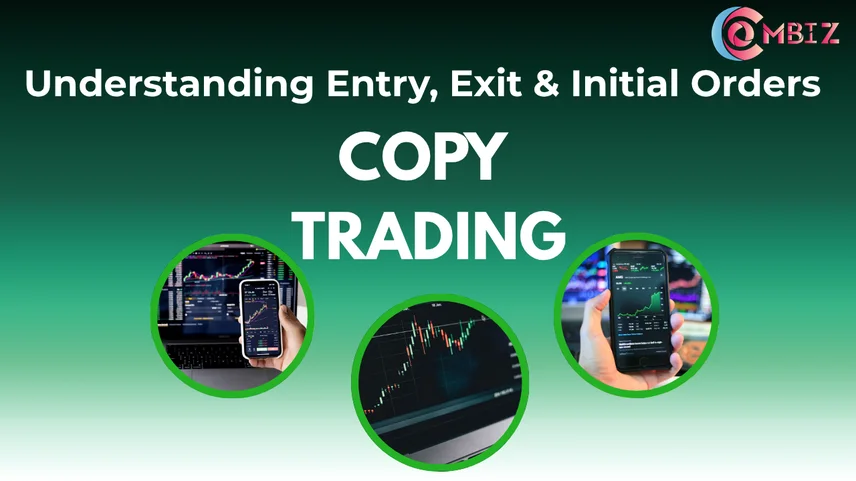
For first-time traders,copy trades simplify trading because they allow trades executed by experienced traders, or "master" traders, to be automatically copied. You don't have to do any market analysis when using copy trading software, because the software system will automatically take trades based on the trades of the trader you are copying.
To successfully trade and manage risk, it is significant that you understand three key order types that are concepts used when you use copy trading. These types are initial orders, entry orders, and small orders. These order types provide a general description of how, and when, trades open, get managed, and get closed when copy trading.
The initial order is the first trade your account executes when you start copying a master trader. This is how your account starts to connect with the trader’s portfolio.
Initial Order Information:
Commencing Copy-trade: When copy trading is made active on your account, the platform duplicates any new trade that the master trader opens automatically.
Proportional Sizing: How you imitate a trader is also proportionate to how much trading capital you have allocated to copying that trader. For instance, if a master trader opens a trade with 5% of their account, which is $10,000, the system will also open the trade with 5% of your allocated account.
Pre-existing Trades: Usually, initial orders will not replicate trades the master trader had already opened before you started to copy them. But certain platforms like Combiz Services Pvt Ltd give you the option to manually copy the open positions to get completely in sync.
This order type is important because it dictates how your copy trading journey starts, as well as making sure your portfolio is in alignment with the trader you are copying.
An entry order is what triggers the opening of a new trade in your account. In copy trading, the entry orders are typically automated so that once your master trader opens a trade, it is automatically executed in your portfolio. Advanced copy trading software now allows you to add more control parameters.
Common Types of Entry Orders:
Market Orders: Market orders are executed immediately at the current market price at the time of the master trader opening the trade; the focus is on speed, although you may experience small price differences (slippage).
Limit Orders: These let you specify a price at which a trade will take place. The order will not execute until the market reaches your desired price level. This provides a level of control over the entry point, but if the price doesn't get there, the order does not execute.
While an understanding of entry orders probably provides value for your copy trading activity, it also gives you assurance that the copy trading will match your preferred trading style, namely, fast execution or controlled pricing.
An exit order is used to close a trade, either to secure profits or to limit losses. In general, it is your copied trade that will close when the master trader closes theirs. Most professional platforms allow you to set your own independent risk management rules, too.
Common Exit Orders:
Having proper exit rules is vital to being successful in copy trading. This holds your account from taking any big losses, additionally locking in any profits automatically.
Understanding these order types gives you a more conscious control over the automated trading process. Even though copy trading is automatized to be more hands off, understanding how your initial, entry, and exit orders work can help you:
In copy trading, benefits aren’t just being able to identify a trader — it also happens when you understand a bit more about your trades in the background. Once you understand initial, entry, and exit orders, you’re likely to experience smoother trading, improved risk management, and better alignment with your chosen master trader.
Platforms like Combiz Services Pvt Ltd help unclutter this journey with user-friendly copy trading software automating and easing these functions. Beginning and experienced traders can clarify that paying attention to these order types is the key to trading smarter, not harder.